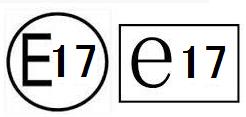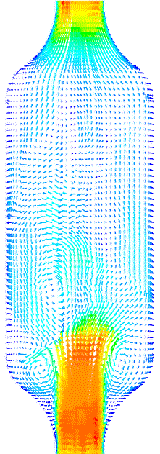e-Mark and E-Mark
The Europe has safety certification requirements formotor vehicle, components and systems that associated with security, and expressed as mark E and mark e.
The E-mark that approved by ECE derives from the regulations issued by Economic Commission of Europe. Recently ECE includes more than 50 countries, it also includesEastern Europe,Southern Europe such non-European countries apart from EU members, ECE regulation is recommended to the members but not mandatory standard. From the point of market demand, the ECE members usually willing to accept the test reports and certificates that comply with ECE regulations. The involved products are components and system units, but no the whole vehicle approval regulations.
The domestic common E mark certification products include tyre,safety glass,auto bulb, warning triangle, vehicle electronic products, etc. The testing organizations that perform E mark certification are usually the technical service organizations of ECE members, the license issuing agencies that issue E mark certification are government departments of ECE members. Different countries have their respective numbers:
E1 - Germany; E2 - France; E3 - Italy; E4 - Holland; E5 - Sweden; E6 - Belgium; E7 Hungary; E8 Czech; E9 Spain; E10 - Yugoslavia; E11 - Britain; E12 - Austria; Norway; Norway; Finland; Finland; Finland; Finland, Romania; Romania; Poland; E21 - Portuguese; E22 - Russia; E23 - Greece; E25 - Croatia; E26 - Slovenia; E27 - Slovakia; E28 - Belarus; E29 - Estonia; E31 - Bosnia and black; E37 - Turkey
The e mark that approved by EEC is the certification mark of whole motor vehicle, safety component and system that theEuropean Union Commission compels the members countries to use according to EU directives. The testing organizations have to be the technical service organizations of EU members, the license issuing agencies are government transport agencies of EU members. The approved products which acquire the e mark will be accepted by all EU members. Different countries have their respective numbers:
E1 - Germany; E2 - France; E3 - Italy; E4 - Holland; E5 - Sweden; E6 - Belgium; E9 Spain; E11 UK; E12 Austria; E13 - Luxemburg; E17 Finland; E18 - Denmark; Portugal; Greece; Ireland; Ireland
E-MARK sign: The e-Mark logo is divided into two forms, one is a rectangular outer frame, the other is a circular outer frame, representing different meanings.


The Finnish Transport Agency is responsible for traffic lanes in Finland and the overall development of the Finnish transport system. The Agency offers spatial data of roads, railways and waterways for viewing and downloading through WMS and WFS services. Also, A WMTS service providing nautical charts is under development.The Finnish Transport Agency has approved various laboratories to conduct EMC tests and Manufacturer Conformity of Production (COP) Audit Introduction for the issuance of the E/e-Mark car certificate throughout Europe, among these laboratories are Midcert, OY Elspecta & Emitech Group.
ECE R10 TYPE APPROVAL OR HOMOLOGATION
After ECE R10 EMC tests are done and PASS test report issued, Type Approval Certificaition or Homologation (E-marking) can be also issued for the product. In this step, ECE R10 test report, technical documents of the product, Conformity of Production (CoP) inspection report/certificate, quality documents (like valid ISO 9001 certificate) of the manufacturing or/and distributor company are checked by a third party and authorized agency. They are also called designated technical service. If all product and company documents are issued and submitted properly, E mark including a unique number can be affixed or labeled on the product.
An approval number is assigned to each type approved. The type approval number consists of 4 sections. Each section shall be separated by the ‘*’ character.
Section 1: The capital letter ‘E’ followed by the distinguishing number of the Contracting Party which has granted the type approval.
Section 2: The number of the relevant UN Regulation, followed by the letter ‘R’, successively followed by:
(a) Two digits (with leading zeros as applicable) indicating the series of amendments incorporating the technical provisions of the UN Regulation applied to the approval (00 for the UN Regulation in its original form);
(b) A slash and two digits (with leading zeros as applicable) indicating the number of supplement to the series of amendments applied to the approval (00 for the series of amendments in its original form);
(c) A slash and one or two character(s) indicating the implementing stage, if applicable.
Section 3: A four-digit sequential number (with leading zeros as applicable). The sequence shall start from 0001.
Section 4: A two-digit sequential number (with leading zeros if applicable) to denote the extension. The sequence shall start from 00.





